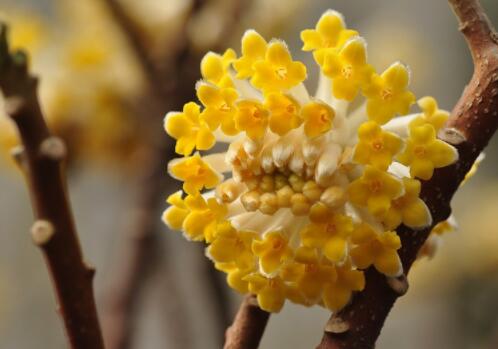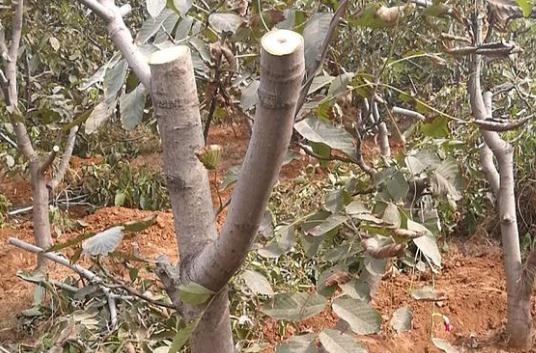How much is the price of a papaya tree for greening? Can its fruit be eaten? Can I make bonsai? How to plant
Papaya tree, also known as wood pear, falling dragon wood, etc., divided into many varieties, such as wrinkled papaya, Xuan papaya, etc., can be planted as green seedlings, the whole plant is used as medicine. So how much is a papaya tree for greening? Can its fruit be eaten? Can I make bonsai? How to plant and maintain?

How much is the price of a papaya tree for greening?
Different quality, different price, the following is the finishing price, for reference only.
Can the fruit of papaya tree used for greening be eaten?
The fruit of papaya tree used for greening can not be eaten. It absorbs too much waste gas. It is used for greening and cannot be eaten. It is bad for your health.
Can papaya trees make bonsai?
You can make bonsai.
Bonsai papaya can produce many different styles of bonsai. Papaya bonsai can be placed in the hall, flower bed, porch corner, leisure place. Papaya bonsai and build a reasonable "collocation, make it more beautiful garden style, embellished is a more elegant and handsome."
How to plant and maintain papaya trees?
Bonsai:
1. Throw the papaya seeds in the basin and grow until the 10cm is moved to a separate flowerpot for planting; if you want the papaya to bear fruit, you have to move it to a larger pot for maintenance, using a foam box and composting some vegetables and peels that you do not eat.
2. After the fertilizer is finished, move the small papaya tree to a large foam box. It will bear fruit after a year, and you can add a few of your favorite foods. If the temperature is not enough, you can make a simple shed for it.
3. It should be noted that the requirements of potted papaya on the balcony are not high. Like warm and humid climate, the soil requirements are not strict, can be planted in warmer places in the south of China, the soil is required to be moist and sunny.
Papaya likes high temperature climate, which not only grows fast and strong, but also has higher fructose content and darker flesh color. During the low temperature period, the growth is slow, the result is smaller, the meat color is lighter, the sugar content is lower, and will die in case of frost. The root of papaya has strong drought tolerance and weak moisture tolerance. As soon as it enters the rainy season, the root is easy to rot, and the loam soil which is loose and fertile and rich in organic matter is the most ideal.
Forest garden planting:
1. Sowing season: frost often occurs between the middle of November and the middle of January every year. In order to bear fruit earlier and prolong the harvest time, the seeds are usually sown from October to November and should be carried out on a sunny day.
2, seed soaking, sprouting: scald the seeds with 55 ℃ water, cool naturally, disinfect the seeds with 800x methyl topiramate for 15 minutes, then pick up the water and scrub the seeds clean, soak the seeds with clean water for about 10 hours, pick them up and wrap them with wet cloth for about 10 hours, accelerate germination with a temperature of about 35 ℃, stir and spray warm water once a day, sow the broken seeds in time, and sow the seeds without broken breasts separately after 7 days.
3. Raising seedlings: in order to improve the seedling rate and make the seedlings strong, we should use Zhuangmiao No. 1 as the medium to raise the seedling plate and cover the top of the disk with a thin film, so as to increase the temperature of the seedbed and break the soil, and then remove the film. When the root system of the seedling is full of medium, transplant it into a large nutrition bag or cup prepared in advance to raise the big seedling, keep the seedling soil semi-dry and semi-wet to a little dry, build an arch shed with transparent film on the seedling bed for heat preservation, and cover it with a film or straw when there is frost to prevent the seedlings from freezing.
4. Land preparation for border application of basic fertilizer
After deep ploughing, the soil mass was broken into a high border about 1.8m-2m wide, that is, 2.2m-2.5m in width, 1500 kg of rotten pile manure (chicken manure, hunting manure, etc.), 150kg of phosphate rock powder, 30kg of compound fertilizer and 0.3kg of borax per mu. Spread the above base fertilizer evenly on the border surface and mix it with the border soil to form a turtle back-shaped border. Then use organic biological fertilizer "Shiquan Dabu" 10 kg mixed water to spray, which is beneficial to decompose the nutrients that are not easy to be absorbed by crops, improve crop immunity, improve soil biological population and so on. After making the soil semi-dry and semi-wet, cover the border with a silver-black plastic film 2.15 meters wide. After being flattened, the surrounding soil mass is pressed. The silver-black double-sided plastic film can reduce insect-borne virus diseases, and has the effects of water conservation, fertilizer conservation, soil loosening, grass control, soil temperature increase and so on.
5. Colonization
The following February after the frost period for planting, plant distance of about 1.8-2 meters, 140-200 plants per mu, papaya seedlings after planting enough fixed root water, fixed root water can be added to the fixed root water and other fungicides, prevent seedlings from getting sick, and do not hurt roots, do not expose roots, do not accumulate water, papaya seedlings should not be planted too deep, slightly deeper than the root neck, watering every day before survival to keep the soil moist.
Time: 2019-04-09 Click:
- Prev

How much is the seedling price of "Dream Flower" incense tree? When will it blossom? How to plant cuttings? Attached to the effect
Jiexiang tree, also known as knot flower, trigeminal wood, deciduous shrub, about two meters high, yellow flowers, its first flowers and then leaves. It is suitable for solitary planting, row planting, cluster planting in front of the court, roadside, wall corner, lawn, or dotted beside rockery, or potted. So how much is the seedling price of incense tree? When will it blossom
- Next

Which is better, seedling or grafted seedling? What are the differences? Is it better to have sweet-scented osmanthus original or grafted?
There is a saying: good seedlings come out of good land, and good seedlings bear good fruit. The advantages and disadvantages of seedlings and grafted seedlings have always been the key issues considered by garden seedling purchasers. Which is better between seedlings and grafted seedlings, and what is the difference between them? Is it better to have sweet-scented osmanthus original or grafted? Generally speaking, the disease resistance of seedlings is better.
Related
- Fuxing push coffee new agricultural production and marketing class: lack of small-scale processing plants
- Jujube rice field leisure farm deep ploughing Yilan for five years to create a space for organic food and play
- Nongyu Farm-A trial of organic papaya for brave women with advanced technology
- Four points for attention in the prevention and control of diseases and insect pests of edible fungi
- How to add nutrient solution to Edible Fungi
- Is there any good way to control edible fungus mites?
- Open Inoculation Technology of Edible Fungi
- Is there any clever way to use fertilizer for edible fungus in winter?
- What agents are used to kill the pathogens of edible fungi in the mushroom shed?
- Rapid drying of Edible Fungi

